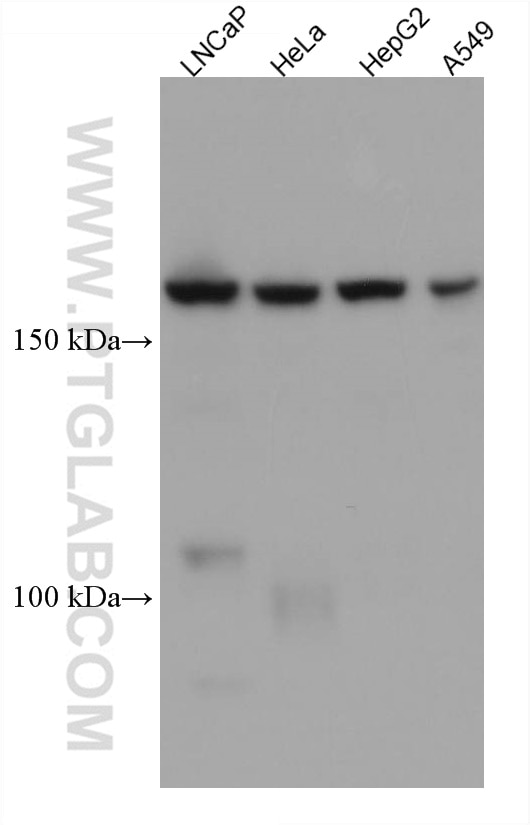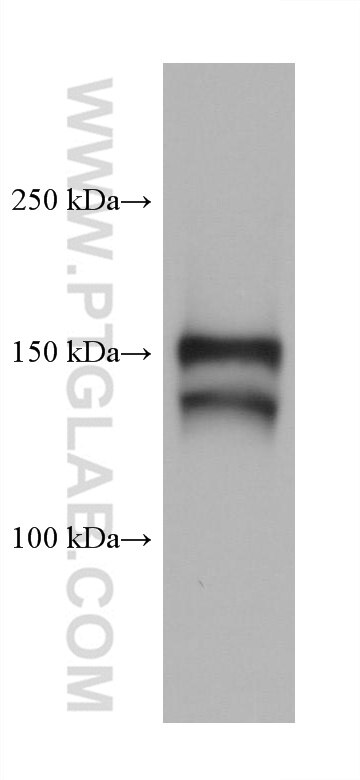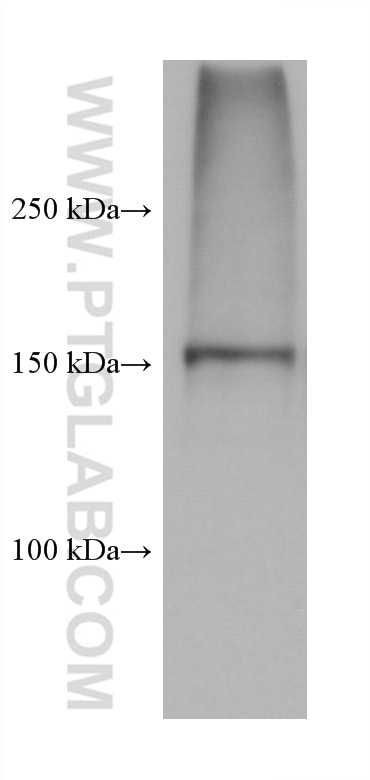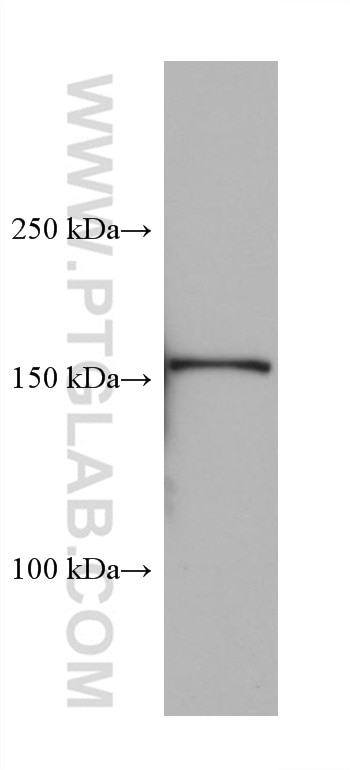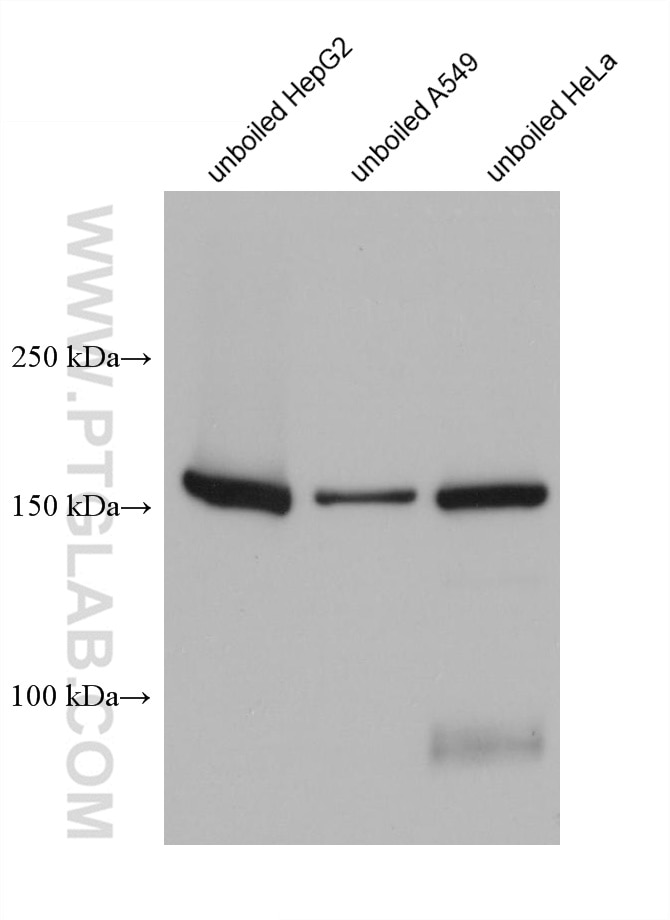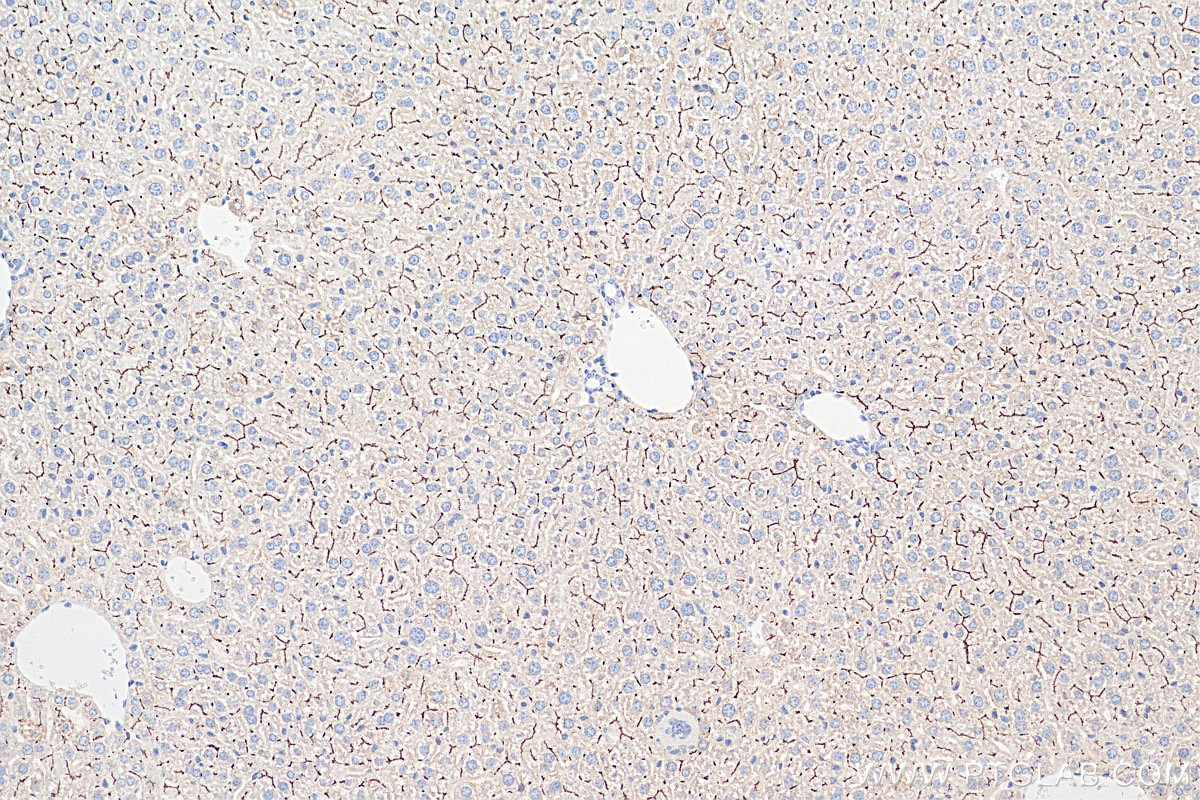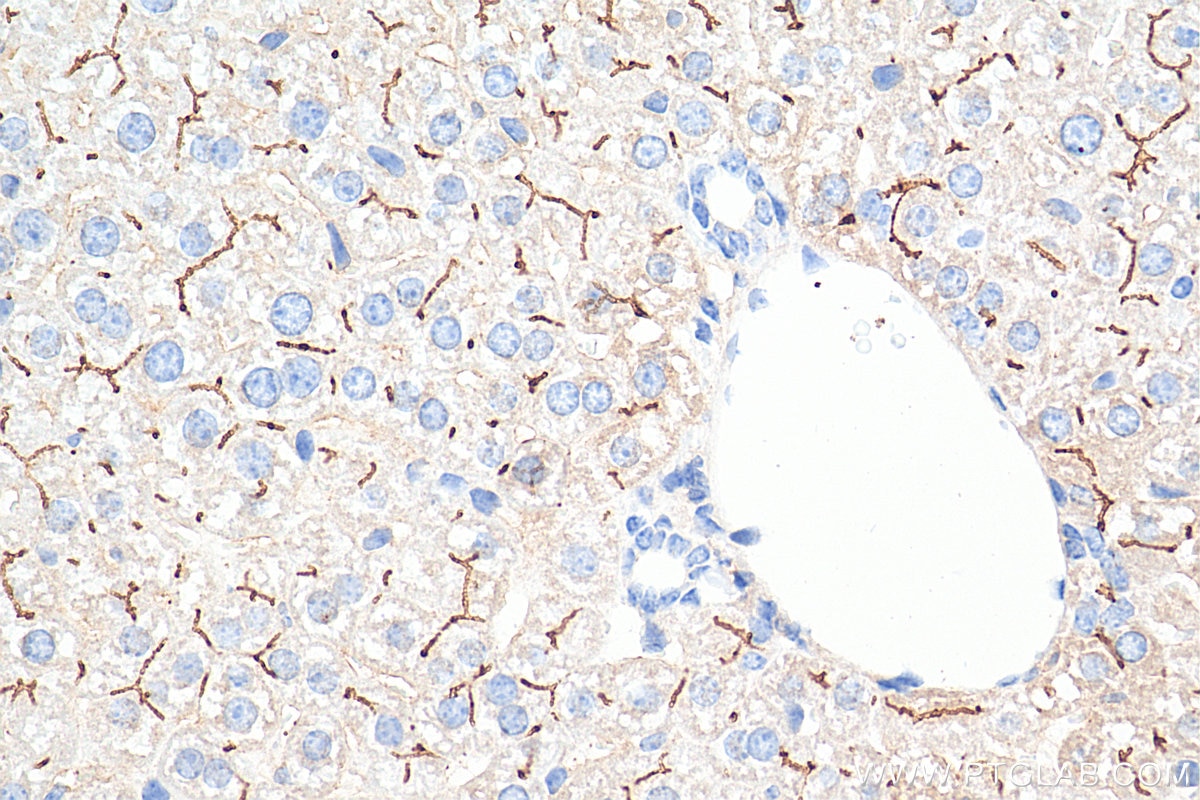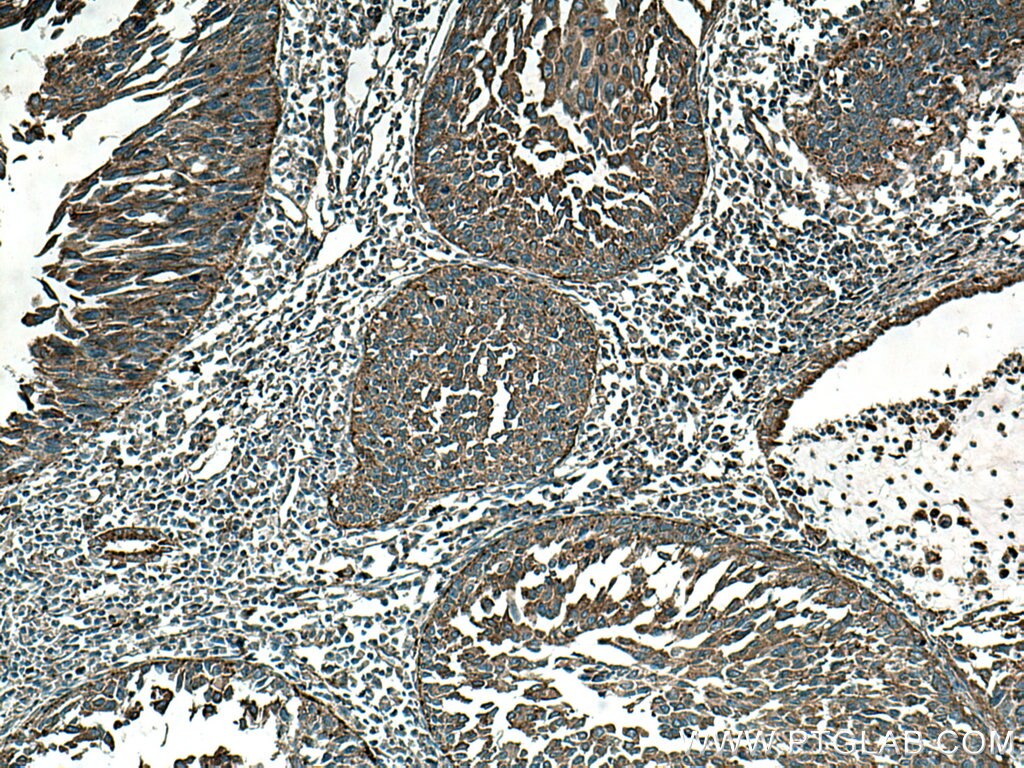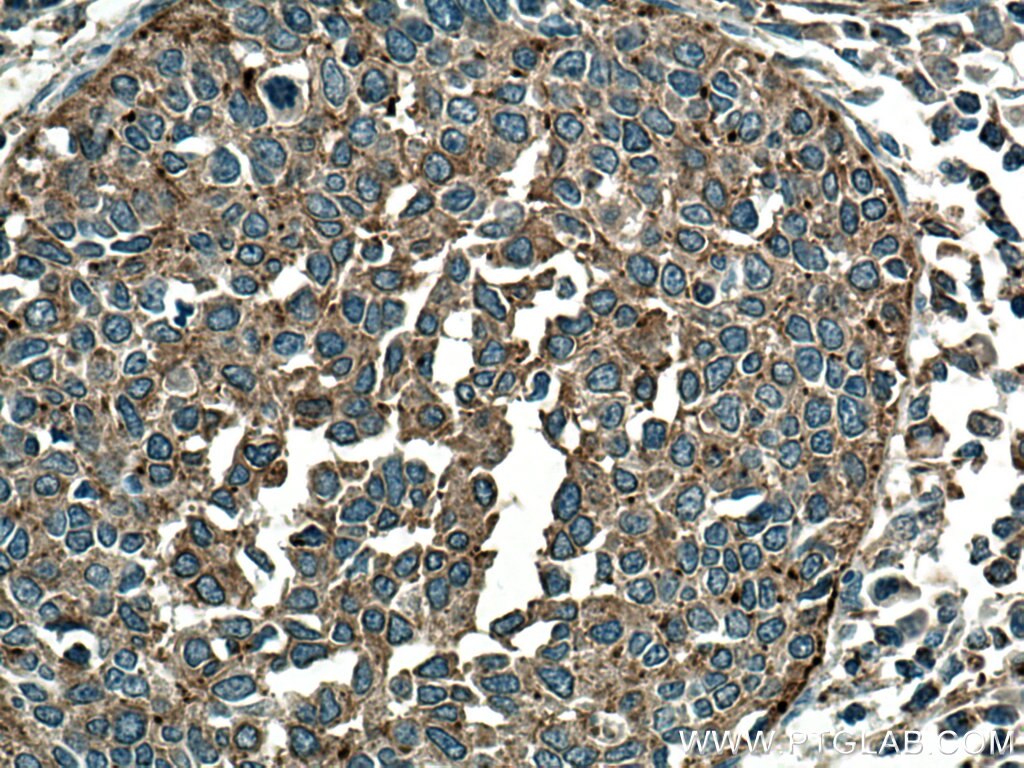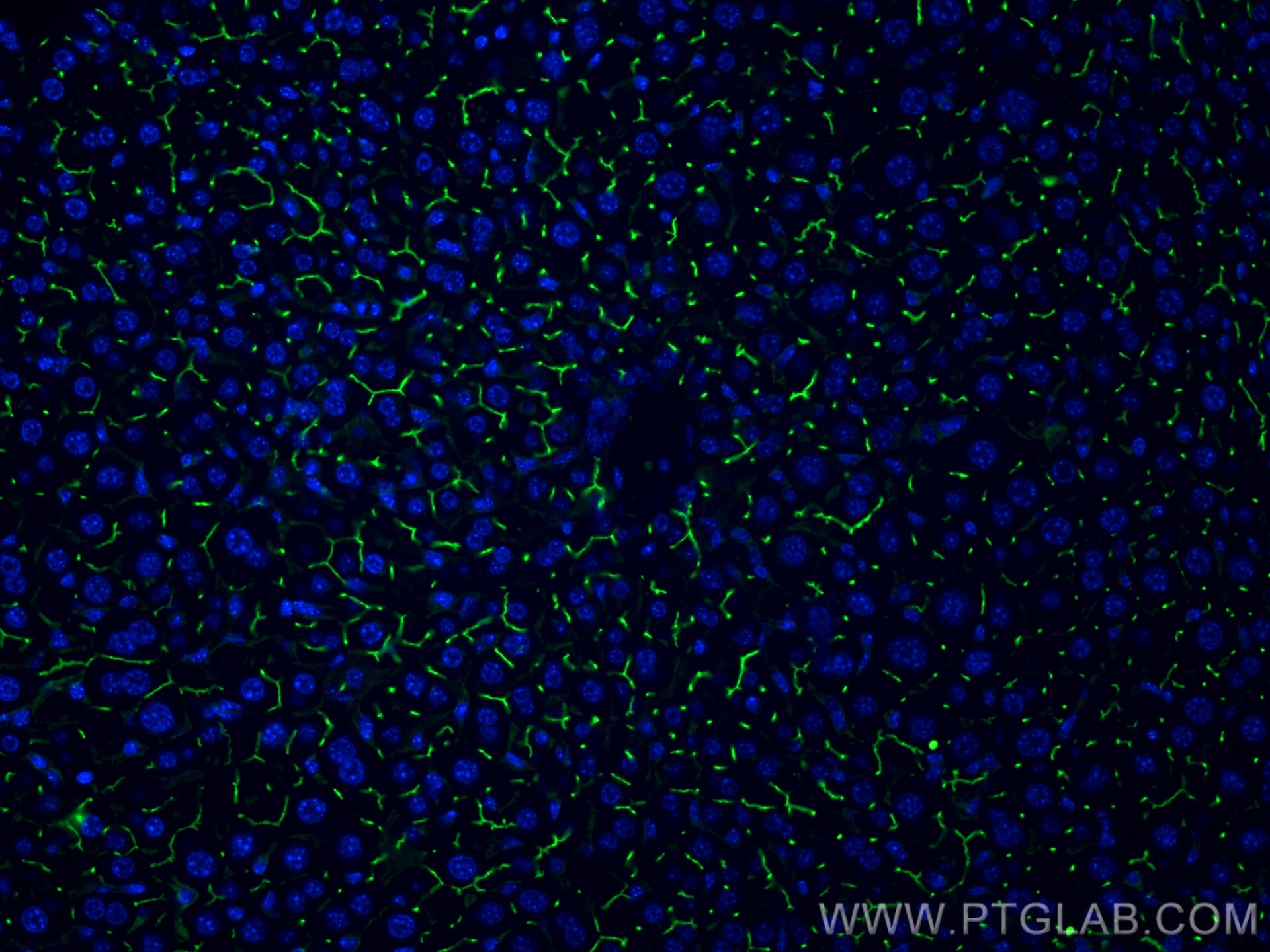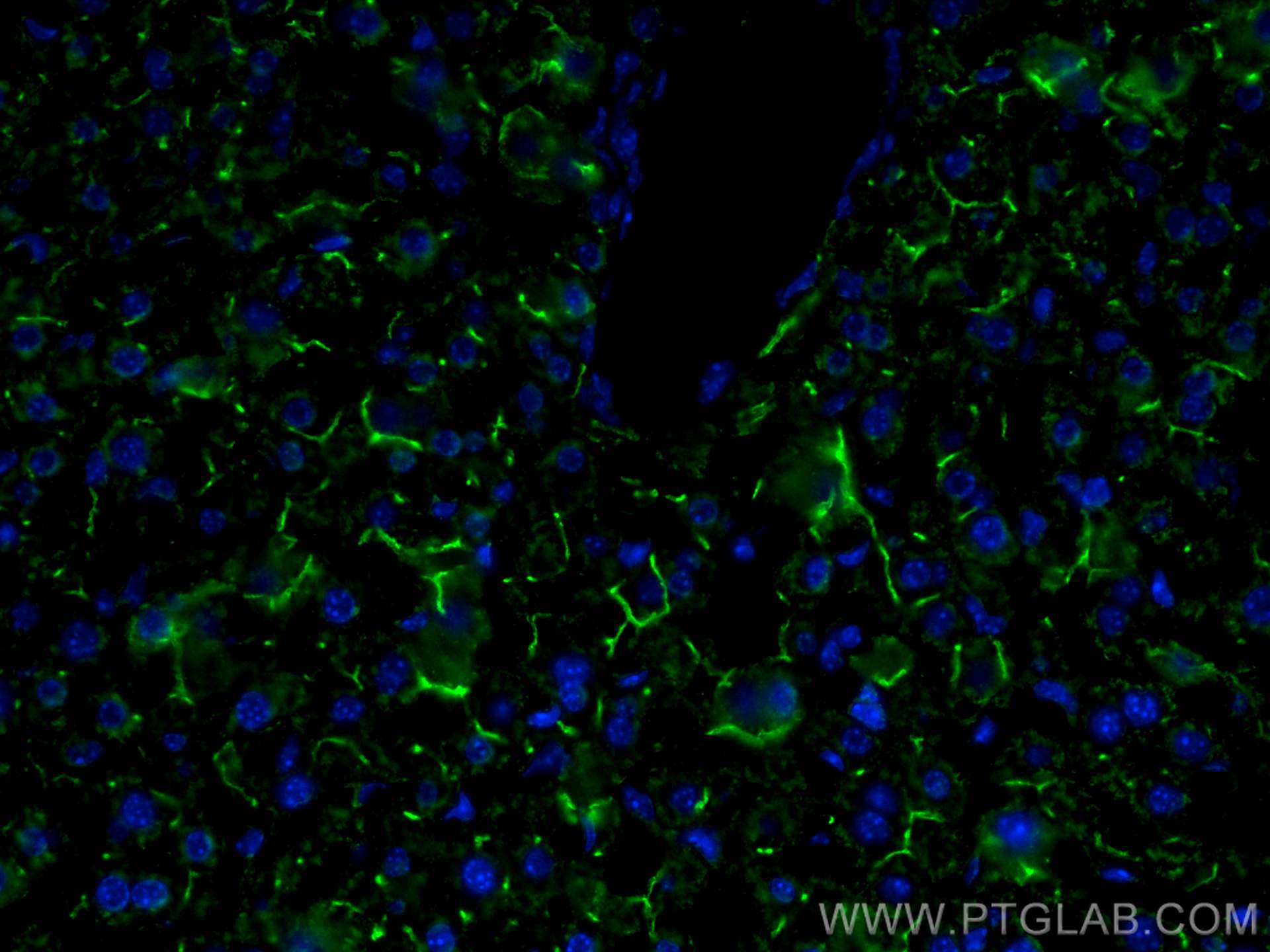Anticorps Monoclonal anti-BSEP
BSEP Monoclonal Antibody for WB, IHC, IF-P, ELISA
Hôte / Isotype
Mouse / IgG1
Réactivité testée
Humain, porc, rat, souris
Applications
WB, IHC, IF-P, ELISA
Conjugaison
Non conjugué
CloneNo.
3C11D5
N° de cat : 67512-1-Ig
Synonymes
Galerie de données de validation
Applications testées
| Résultats positifs en WB | cellules LNCaP, cellules A549, cellules HeLa, cellules HepG2 non bouillies, tissu hépatique de rat, tissu hépatique de souris, tissu pulmonaire de porc |
| Résultats positifs en IHC | tissu hépatique de souris, tissu de cancer du col de l'utérus humain il est suggéré de démasquer l'antigène avec un tampon de TE buffer pH 9.0; (*) À défaut, 'le démasquage de l'antigène peut être 'effectué avec un tampon citrate pH 6,0. |
| Résultats positifs en IF-P | tissu hépatique de souris, |
Dilution recommandée
| Application | Dilution |
|---|---|
| Western Blot (WB) | WB : 1:5000-1:50000 |
| Immunohistochimie (IHC) | IHC : 1:8000-1:32000 |
| Immunofluorescence (IF)-P | IF-P : 1:5000-1:20000 |
| It is recommended that this reagent should be titrated in each testing system to obtain optimal results. | |
| Sample-dependent, check data in validation data gallery | |
Applications publiées
| WB | See 9 publications below |
| IHC | See 1 publications below |
| IF | See 1 publications below |
Informations sur le produit
67512-1-Ig cible BSEP dans les applications de WB, IHC, IF-P, ELISA et montre une réactivité avec des échantillons Humain, porc, rat, souris
| Réactivité | Humain, porc, rat, souris |
| Réactivité citée | rat, Humain, souris |
| Hôte / Isotype | Mouse / IgG1 |
| Clonalité | Monoclonal |
| Type | Anticorps |
| Immunogène | BSEP Protéine recombinante Ag29135 |
| Nom complet | ATP-binding cassette, sub-family B (MDR/TAP), member 11 |
| Masse moléculaire calculée | 146 kDa |
| Poids moléculaire observé | 150-160 kDa |
| Numéro d’acquisition GenBank | NM_003742 |
| Symbole du gène | BSEP |
| Identification du gène (NCBI) | 8647 |
| Conjugaison | Non conjugué |
| Forme | Liquide |
| Méthode de purification | Purification par protéine G |
| Tampon de stockage | PBS with 0.02% sodium azide and 50% glycerol |
| Conditions de stockage | Stocker à -20°C. Stable pendant un an après l'expédition. L'aliquotage n'est pas nécessaire pour le stockage à -20oC Les 20ul contiennent 0,1% de BSA. |
Informations générales
ABCB11, also named as BSEP, belongs to the ABC transporter superfamily. ABCB11 involved in the ATP-dependent secretion of bile salts into the canaliculus of hepatocytes. Mutation of ABCB11 will cause the progressive familial intrahepatic cholestasis type 2 (PFIC2) and the benign recurrent intrahepatic cholestasis type 2 (BRIC2). Genetic variations in ABCB11 may play a role in drug-induced cholestasis causing liver damage. The calculated MW of ABCB11 is 146 kDa, 67512-1-Ig can detect bands around 150 kDa. It's reported that ABCB11 has several N-glycosylation sites, the observed higher molecular mass may due to posttranslational N-glycosylation. (PMID: 9545351, 24359682)
Protocole
| Product Specific Protocols | |
|---|---|
| WB protocol for BSEP antibody 67512-1-Ig | Download protocol |
| IHC protocol for BSEP antibody 67512-1-Ig | Download protocol |
| IF protocol for BSEP antibody 67512-1-Ig | Download protocol |
| Standard Protocols | |
|---|---|
| Click here to view our Standard Protocols |
Publications
| Species | Application | Title |
|---|---|---|
Front Pharmacol Vitamin C and vitamin D3 alleviate metabolic-associated fatty liver disease by regulating the gut microbiota and bile acid metabolism via the gut-liver axis | ||
Appl Biochem Biotechnol Sphincter of Oddi Dysfunction Induces Gallstone by Inhibiting the Expression of ABCB11 via PKC-α | ||
Biomed Pharmacother Lupeol improves bile acid metabolism and metabolic dysfunction-associated steatotic liver disease in mice via FXR signaling pathway and gut-liver axis | ||
Toxicol Appl Pharmacol Pirfenidone ameliorates ANIT-induced cholestatic liver injury via modulation of FXR, NF-кB/TNF-α, and Wnt/GSK-3β/β-catenin signaling pathways | ||
Gut Microbes Bacteroides fragilis alleviates necrotizing enterocolitis through restoring bile acid metabolism balance using bile salt hydrolase and inhibiting FXR-NLRP3 signaling pathway | ||
J Control Release ROS-responsive nanoparticle delivery of obeticholic acid mitigate primary sclerosing cholangitis |
